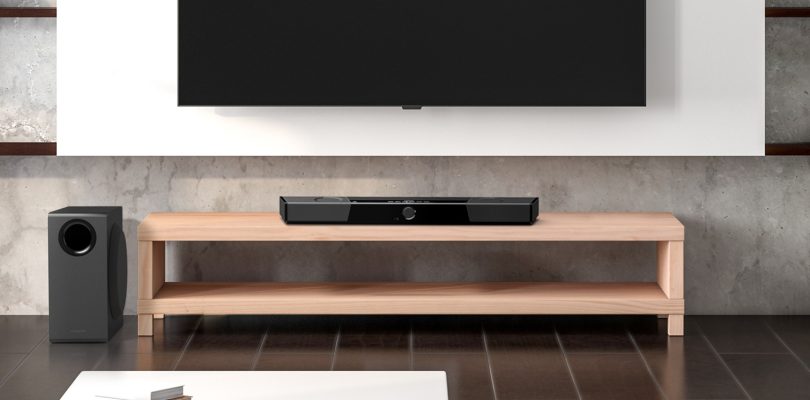Creative SXFI Carrier Review
In 2019 the soundbar market reached a volume of more than $ 5 billion, and according to the Global Market Insights consultancy, it will continue to grow at a rate of 3.5% per year for at least five more years. If so, in 2026, it will have a volume of approximately 6.5 billion dollars. These figures reflect with overwhelming clarity that users are interested in soundbars.
Using them, we can improve the sound quality of our television tangibly without investing too much money (although some are not at all economical). And, in addition, installing them is much easier than deploying a multichannel sound system that will at least force us to accommodate five speakers for the main and effect channels and a subwoofer.
The challenge that soundbars face is virtualizing surround audio with credibility as close as possible to multichannel audio equipment.
Soundbars’ challenge is to virtualize surround audio with credibility as close as possible to that offered by a multichannel sound system, which is undoubtedly the best option if our budget and the space we have available allow us to access it. And achieving it is not easy. Most of it fails, but this SXFI Carrier from Creative hasn’t.
I don’t want to be overly enthusiastic, but honestly, this is the best soundbar I’ve reviewed so far. I have tried more expensive ones, like, for example, the Bang & Olufsen Beosound Stage that I reviewed last year, which is very good, but not as good as this proposal from Creative. In this article, we will see that it is not perfect, but, objectively, its sound is at a difficult level to match. This is how the new SXFI Carrier spends it.
It is surprising how compact it is, but its finish has room for improvement.
This soundbar is unusually compact. With a length of 88 cm, a bottom of 12.8 cm, and a height of 7.6 cm, its dimensions are more restrained than those of most high-end soundbars designed for audio processing. Dolby Atmos.
Yes, this is a high-end device for its sound quality, which we will explore in the next section of this review and its price. And the fact is that the 999.99 euros that Creative asks us for places it out of the reach of users who are not willing to invest so much money in a soundbar.
It is reasonably compact is an advantage when it comes to locating it, but the average measurements of its enclosure could give away that its speaker endowment is not ambitious. Nothing is further from reality. This SXFI Carrier incorporates three soft dome tweeters and four midrange drivers.
The location of each of these drivers has been chosen with a primary strategy: to use the wall reflections in the most efficient way possible to get them to recreate an enveloping sound field around the listening position.
This soundbar aims to use wall reflections effectively to recreate an immersive sound field around the listening position.
In reality, this strategy is not new. Many other soundbar manufacturers use it because it is the only way to credibly virtualize surround audio using a single point source of sound wave emission.
When they propagate through the air and collide with the walls or other objects in the room in which we have installed the soundbar, a part of the acoustic energy of the sound waves is absorbed by the object they influence, and another part is reflected. Precisely these reflections help the soundbar to give us the feeling that there is a speaker in a place in space where, in reality, there is nothing.
However, this is only one of the ingredients in the recipe. The acoustic design and technology of this soundbar have been developed jointly by the engineers of Creative and Dolby, and, interestingly, they have used psychoacoustics and neuroscience to stimulate our brain and make the sound field as immersive as possible.
In the article that I link here, we explain in great detail how this strategy works, but very broadly, it consists of processing the audio to “trick” our brain into believing that the sound that our ears pick up comes from places around us there is no loudspeaker.
Each of the seven speakers that this soundbar incorporates is exQuoted by an independent class D amplifier which, in turn, is controlled by a DSP (digital signal processor) to ensure that each speaker always works within its comfort zone. Reproducing the low end is responsible for a wireless subwoofer equipped with a 10-inch diaphragm, which we will explore later.
According to Creative, the combined RMS power of the soundbar amplifiers and the ‘subwoofer’ amounts to 450 watts, but this electronics manages to deliver peaks of 900 watts.
The combined RMS power of the amplifiers that drive the soundbar speakers is 250 watts, and the RMS power of the unit that drives the subwoofer speaker is 200 watts. According to Creative, the set comprises the soundbar, and the subwoofer exhibits a frequency response that ranges from 25 Hz to 20 kHz.
Everything we’ve seen so far reflects that the design of this soundbar from an acoustic point of view is ambitious. Its endowment of speakers is generous, and the amplification on paper seems to have adequate power delivery, but we come to one of the sections in which, in my opinion, this soundbar has room for improvement: its finish.
It’s not badly built, but the plastic Creative has used to build the soundbar enclosure doesn’t convey robustness. The type of polycarbonate fits well in a soundbar that costs a fraction of what they ask us for this SXFI Carrier, but for a 1000 euro product, I think we should ask for higher quality plastics. In this area, the B&O Beosound Stage soundbar that I told you about in the first paragraphs of this review gives a good overview of this Creative proposal.
In the following photo, we can see how Creative has solved the physical connectivity of this soundbar. The three HDMI connectors (both input and output) implement the 2.1 standards, a success. It also has a TosLink optical digital input, an auxiliary input in 3.5 mm jack format, and a subwoofer output, among other connections (we have collected them all in the specifications table).
The only thing I miss about this soundbar in the realm of connectivity is the presence of one or two additional HDMI 2.1 inputs.
We have an additional 3.5 mm jack headphone output on the front panel, although, as we will see in the next section of the analysis, both devices can also communicate wirelessly. The only thing I miss about this soundbar in the realm of connectivity is the presence of one or two additional HDMI 2.1 inputs. The only two that it incorporates may fall short if you have, for example, a couple of video game consoles and a Blu-ray Disc player.




